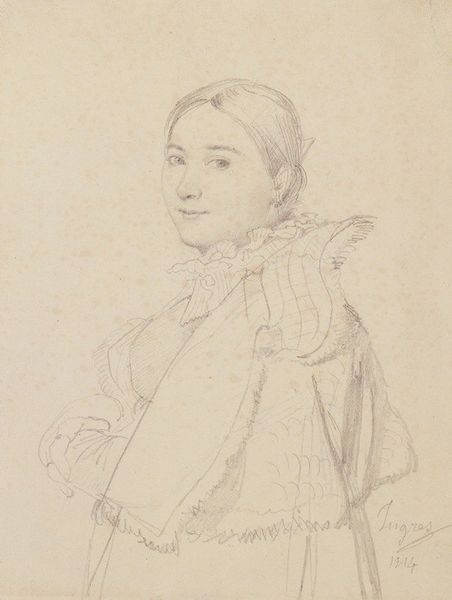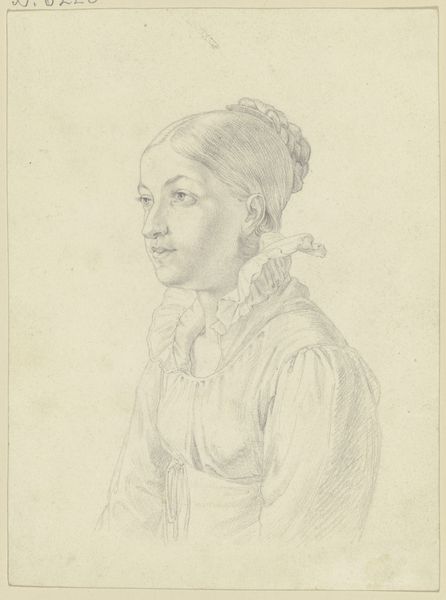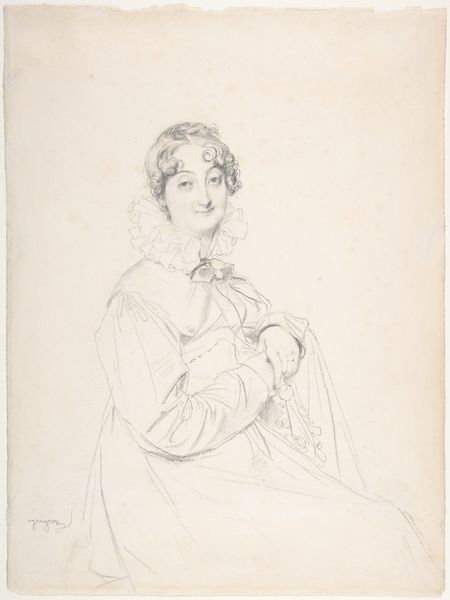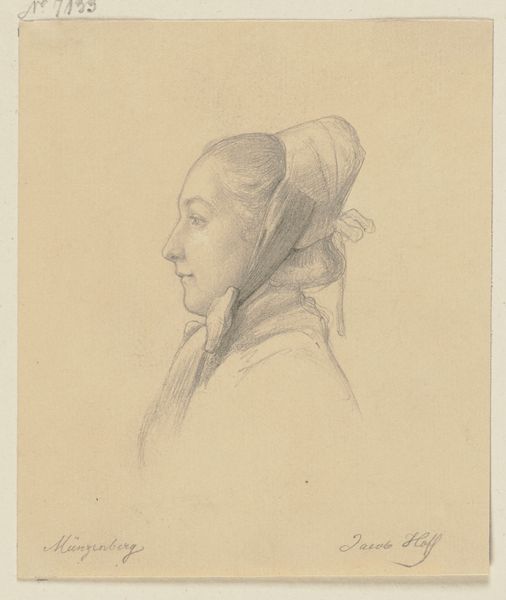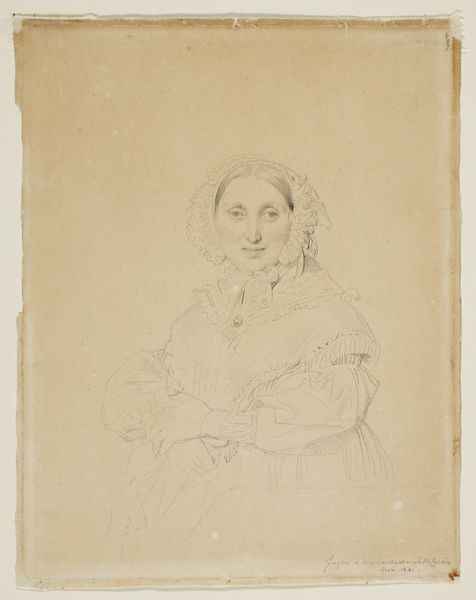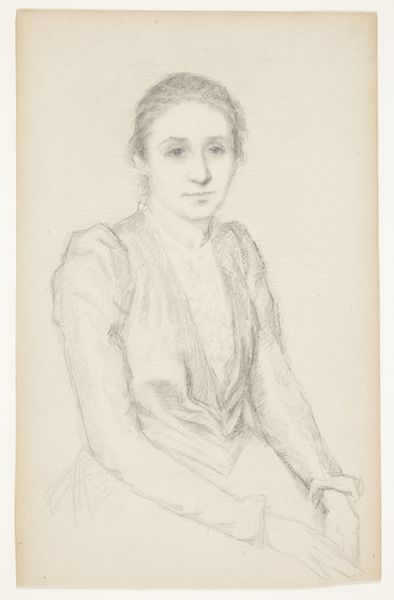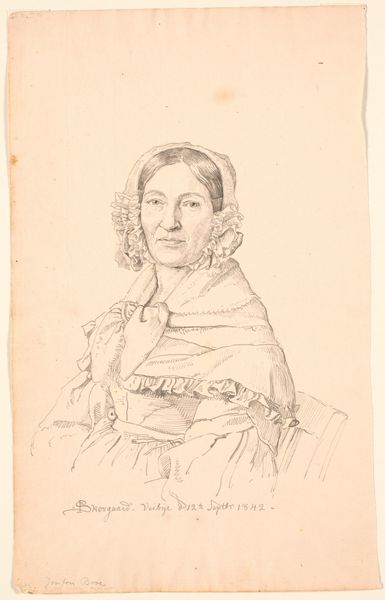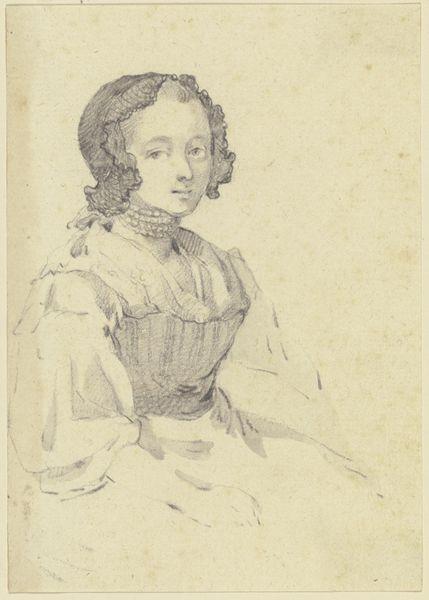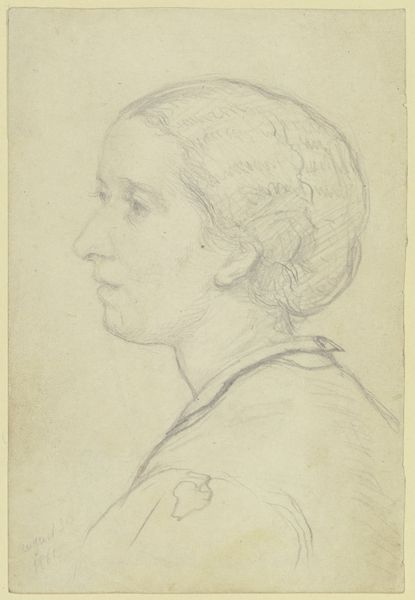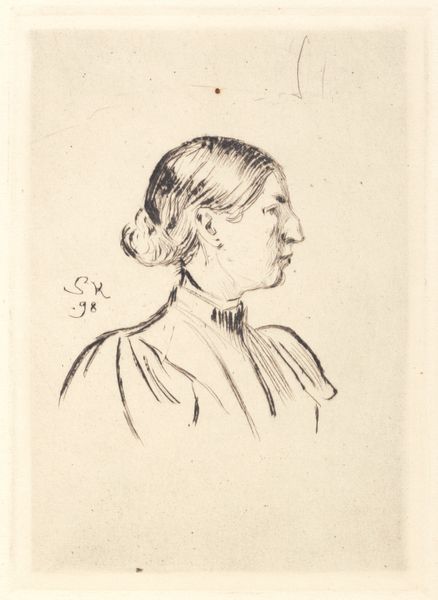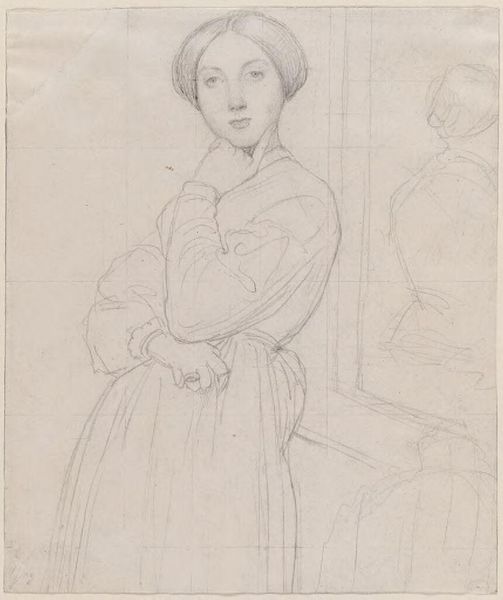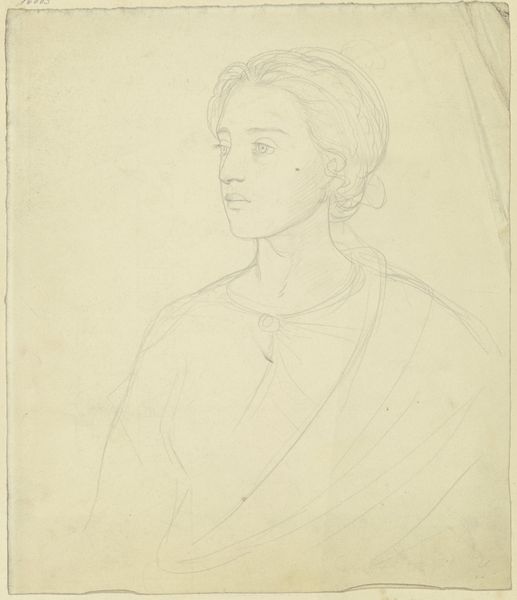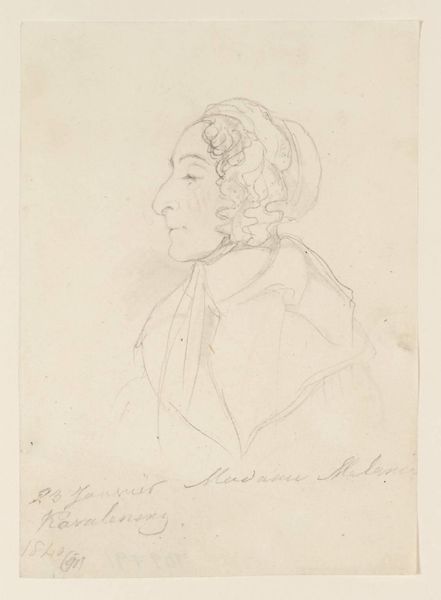
Madame Jean-Auguste-Dominique Ingres, née Madeleine Chapelle 1814
0:00
0:00
drawing, print, pencil
#
portrait
#
drawing
#
neoclacissism
# print
#
pencil
Dimensions: Sheet: 7 5/8 x 5 11/16 in. (19.3 x 14.4 cm)
Copyright: Public Domain
Jean-Auguste-Dominique Ingres created this pencil on paper portrait of his wife, née Madeleine Chapelle, in 1814. Ingres's portrait provides a glimpse into the conventions of representation and social status in early 19th-century France. The delicacy of the drawing and the sitter's placid expression reinforce the ideal of feminine virtue and domesticity valued by the French bourgeoisie at the time. As a student of Jacques-Louis David, Ingres absorbed the Neoclassical style but adapted it to portraiture to suit the aesthetic preferences of his patrons. Consider how the Napoleonic era and the subsequent Bourbon Restoration influenced artistic patronage and the subjects artists chose to depict. The Musée du Louvre, which had recently been established, played a central role in shaping artistic tastes and promoting certain styles. To fully appreciate this work, one might consult primary sources such as letters, diaries, and exhibition catalogs. These resources help to illuminate the social and institutional context in which Ingres operated and the artistic values that shaped his work. Ultimately, this portrait of Madame Ingres reminds us that art is always contingent on its social and institutional environment.
Comments
No comments
Be the first to comment and join the conversation on the ultimate creative platform.
